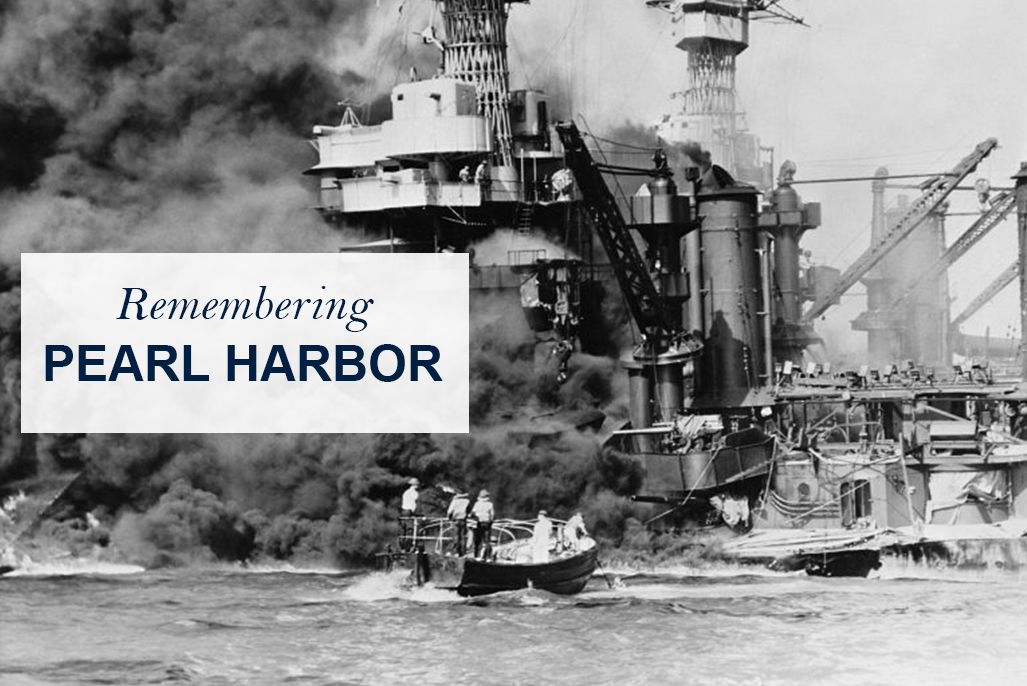83 Years Ago
December 7 marks Pearl Harbor Day, a time to honor the lives lost during the surprise attack on the U.S. naval base at Pearl Harbor, Hawaii, in 1941. This event, often referred to as “a date which will live in infamy,” as President Franklin D. Roosevelt described it, not only changed the course of World War II but also shaped the history of the United States and the wider world.
In the early morning hours of December 7, 1941, the Imperial Japanese Navy launched a surprise military strike against the United States. Over 350 Japanese aircraft, including bombers, torpedo planes, and fighters, descended upon Pearl Harbor in two waves. Their goal was to neutralize the U.S. Pacific Fleet, preventing interference with Japan’s plans to expand its territory in Southeast Asia.
The assault was devastating. In just over two hours:
- Over 2,400 Americans were killed, including military personnel and civilians.
- Nearly 1,200 were wounded.
- Eight battleships, including the USS Arizona and USS Oklahoma, were damaged or destroyed.
- Numerous other vessels, planes, and facilities were also heavily damaged.
The USS Arizona remains a stark symbol of the attack. It suffered a catastrophic explosion, sinking to the harbor’s floor and entombing more than 1,100 sailors and Marines. Today, the USS Arizona Memorial stands as a reminder of the lives lost in the attack.
Tensions between the United States and Japan had been escalating for years. Japan sought to dominate Asia and the Pacific, but its aggressive expansion faced resistance from Western powers, particularly the U.S. In response to Japan’s invasion of China and its occupation of French Indochina, the United States imposed economic sanctions, cutting off vital resources like oil and steel.
The sanctions placed immense pressure on Japan, and rather than retreating from its expansionist policies, Japan sought a military solution. The attack on Pearl Harbor was a calculated risk to cripple American naval power long enough for Japan to secure its objectives in the Pacific.
America’s Response
The day after the attack, President Roosevelt addressed Congress and the nation in a powerful speech, declaring that December 7, 1941, was “a date which will live in infamy.” Congress swiftly approved a declaration of war against Japan, marking the United States’ official entry into World War II.
Within days, Germany and Italy declared war on the U.S., drawing the nation into a global conflict on two fronts. The attack unified Americans in a way few events ever have. Men and women across the country volunteered for military service, factories shifted to wartime production, and communities rallied to support the war effort.
Pearl Harbor stands as a stark reminder of the cost of complacency and the unpredictability of global conflict. It also serves as a testament to the resilience and unity of the American people. The attack galvanized the nation, transforming the U.S. into a global superpower and leading to a military-industrial boom that would shape the 20th century.
While Pearl Harbor is remembered for its devastation, it is also a story of recovery and resolve. By the war’s end in 1945, the United States had played a pivotal role in defeating the Axis powers and reshaping the postwar world.
Honoring the Fallen
In the years following the war, December 7 became a day of reflection and remembrance. The USS Arizona Memorial, dedicated in 1962, draws millions of visitors annually. The white structure spans the sunken battleship, preserving the memory of the sailors and Marines who perished there. Visitors can still see oil slowly seeping from the ship’s wreckage, often referred to as “the tears of the Arizona.”
Across the country, Pearl Harbor survivors, their families, and communities hold ceremonies to honor the lives lost and to educate future generations about the attack’s significance. Schools, museums, and veterans’ organizations play a critical role in ensuring that the stories of Pearl Harbor and its heroes are never forgotten.
The Illinois House Republicans have been hard at work serving Veterans this year. Just this past week, Rep. Ryan Spain held a Veterans Resources Fair in Princeton. This is a free, annual event that includes helpful guides, literature, and other resources from a variety of local organizations, as well as state, county, and local government agencies. Other notable events this fall included a co-sponsored Rep. Hammond and Rep. Swanson Veterans Fair in Macomb and a Rep. Haas Veterans Fair in Bourbonnais (in conjunction with the Kankakee County Veterans Assistance Commission). These events represent the legislators’ desire to serve the veterans who have given so much to our country.
“We had an incredible Veterans Resources Fair this past week,” Rep. Spain said. “Thank you to everyone who came out and made it such a wonderful experience. I’m grateful we had the opportunity to provide important resources for the veterans in our communities. They have given us so much, and this is the least we can do. I was honored to have the opportunity to meet so many veterans and listen to their thoughts and concerns.”
There is also a Veterans Survey available here, courtesy of the Illinois House Republicans.
Pearl Harbor Day is a call to remember not just the tragedy but the strength and unity that followed. It teaches us that even in the darkest hours, there is a path forward, a lesson as relevant today as it was in 1941.
Pearl Harbor Day also serves as an opportunity to honor the values that emerged in the aftermath of tragedy: unity, resilience, and a commitment to justice. As we remember December 7, 1941, let us pay tribute to those who made the ultimate sacrifice, ensure their stories are passed on to future generations, and recommit ourselves to the principles of peace and freedom.
